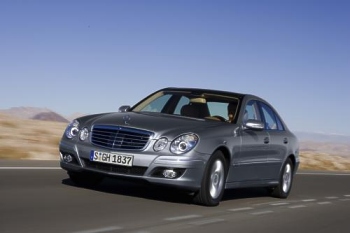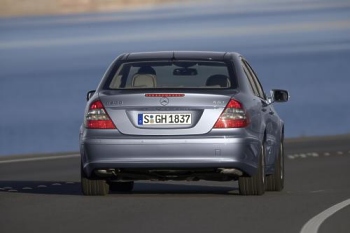
March 14, 2007
This Week:
-
Great success for Venezuelan edition of the Master Maserati driving courses
-
MINI USA provides Real Time Trafic Data onboard with Clear Channels Radio
-
Ford sells Aston Martin to a consortium of David Richards and John Sinders
-
Mercedes-Benz E 200 NGT: The most powerful natural-gas-driven saloon ever
-
Audi takes over management responsibility for Volkswagen’s Brussels plant
-
Honda Auto Parts Manufacturing Co., Ltd. Begins Operations in China
-
Valeo earns five awards from Toyota, including the top quality award
© 1998 - 2007
Copyright &
Disclaimer
Automotive Intelligence,
www.autointell.com
All Rights Reserved .
For questions please contact
editor@autointell.net
|
Mercedes-Benz E 200 NGT: The most powerful natural-gas-driven saloon ever
With CO2 emissions reduced by more than 20 percent and a more than 50 percent reduction in operating costs, the Mercedes-Benz E 200 NGT has been available since the spring of 2004. As well as making it one of the most cost-effective models in the Mercedes range, the 120-kW/163-hp four cylinder engine under the bonnet of the bi fuel E 200 NGT also makes it the most powerful natural-gas-driven saloon currently in production. Natural-gas-powered vehicles are a key element of DaimlerChrysler's overall concept for reducing fuel consumption and CO2 emissions, and for safeguarding a sustainable form of mobility. The E 200 NGT (Natural Gas Technology) was developed at the Mercedes-Benz Technology Center on the platform of the E 200 KOMPRESSOR.
The four-cylinder powerplant has a
power rating of 120 kW/163 hp and generates a peak torque of 240
Newton metres. Thanks to the elaborate solutions which have been
used to integrate the additional technical components, power
delivery, comfort, quality and safety have not been compromised
in any way aboard the E 200 NGT. |
. |
|
|
The E 200 NGT with its bi-fuel petrol/natural-gas power unit complies with the same stringent EU 4 emissions limits met by the petrol-powered E 200 KOMPRESSOR. In natural-gas operating mode, emissions of carbon dioxide are cut by over 20 percent compared to petrol operation. The E 200 NGT can be run on either natural gas or premium unleaded petrol, with the driver being free to decide which of the two drive sources should be deployed. The buttons in the multifunction steering wheel and the central display in the instrument cluster can be used to switch between natural-gas and petrol operation as required. |
Ensuring a smooth, jolt-free switch between modes is the task of a special electronic control circuit which orchestrates the changeover for each cylinder individually. A gauge in the instrument cluster's central display keeps the driver informed of the current level of gas in the reservoirs. Once the supply of gas has been exhausted, the system automatically switches back to petrol operation, so smoothly that the change is imperceptible to the vehicle's occupants. As soon as the reservoirs are refuelled with natural gas, the journey is automatically resumed in the gas operating mode.

The supercharged TWINPULSE engine was modified by the addition of injector nozzles on the underside of the intake manifold. A pressure regulator with sensor and electromagnetic shut-off valve is fitted near the engine to regulate the supply of natural gas and maintain the required system pressure at a constant level. The reprogrammed engine electronics ensure seamless operation in both drive modes. The E 200 NGT distinguishes itself from comparable models, which often deliver poorer performance in natural-gas mode, by matching the sophisticated four cylinder power unit's exemplary power and torque characteristics even when running on natural gas. This makes the E 200 NGT the most powerful saloon with a bi-fuel drive unit currently in series production.
This environmentally friendly variant of the E-Class is available in Germany, Austria, Italy, Sweden and Switzerland among other markets, and in a right hand drive version for Thailand and Singapore.

Quite apart from the drastic cut in CO2 emissions, running the vehicle on natural gas also holds economic benefits. At the present time, a kilogram of natural gas costs between € 0.80 and € 0.90 in Germany, which translates into a cost of between € 0.54 and € 0.60 per litre when equated with the energy provided by petrol. This makes natural gas over 50% more cost-effective than premium unleaded petrol. Furthermore, a range of financial incentives - such as tax benefits and subsidies by the gas suppliers - is on offer in Germany to assist with the purchase of natural-gas-powered vehicles.
Expansion of the filling station network in Germany is continuing apace. There are currently more than 730 filling stations in Germany with natural-gas pumps. Refueling with natural gas is extremely straightforward and takes no longer than with traditional fuel types. Furthermore, no losses through evaporation take place and no unpleasant odors are produced during refueling.
(March 7, 2007)
| .
Homepage News Companies Management Publications Events Guestbook Search . |
